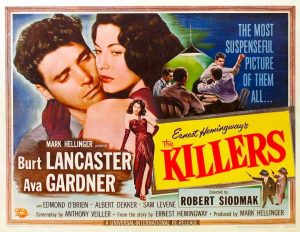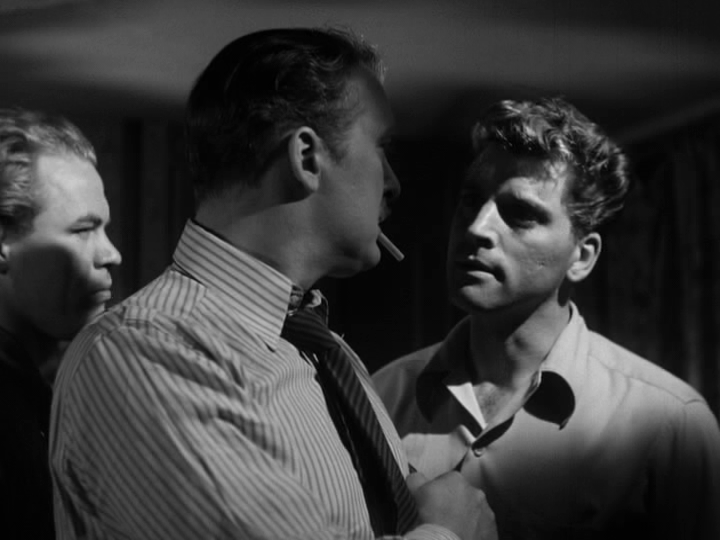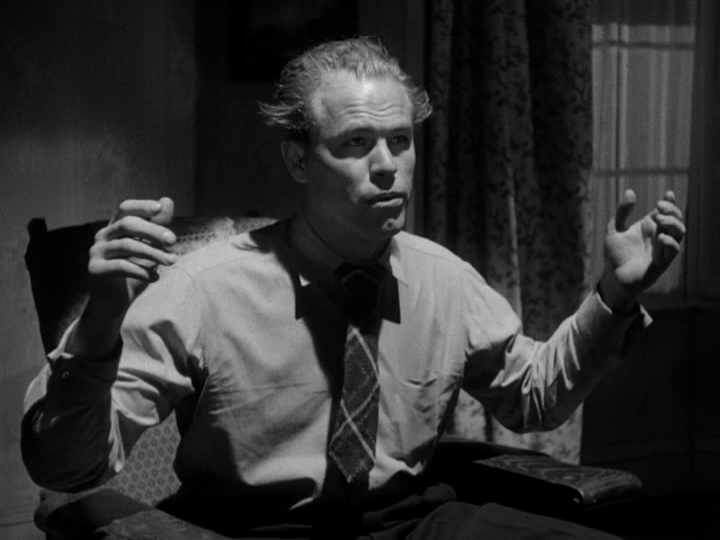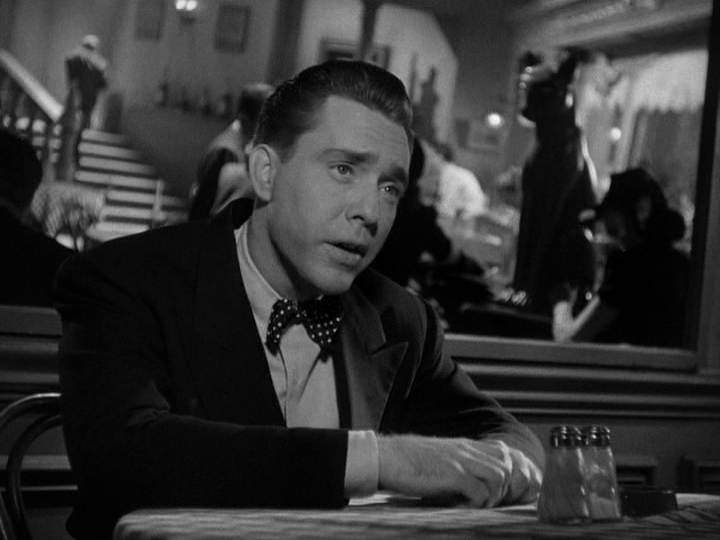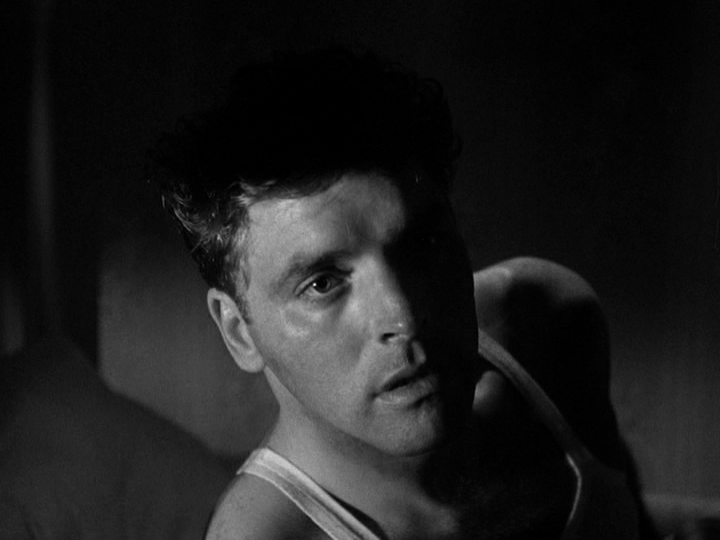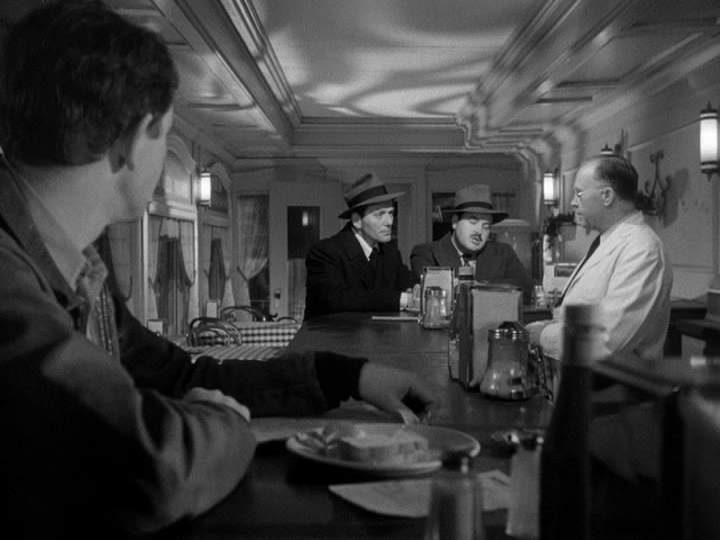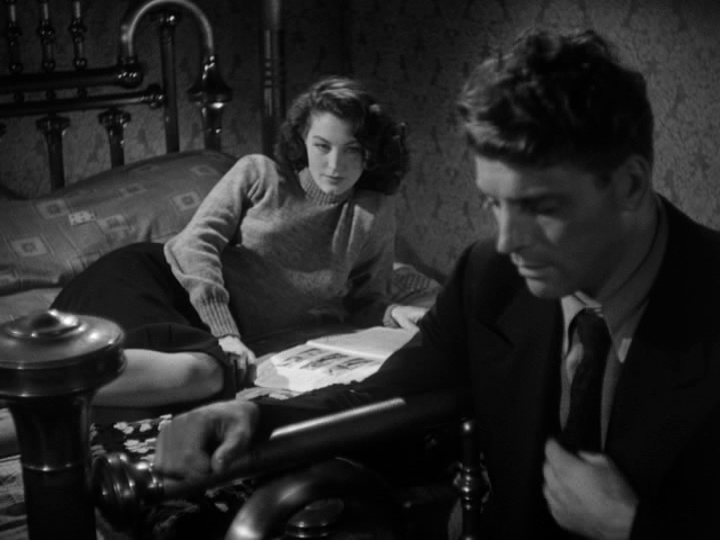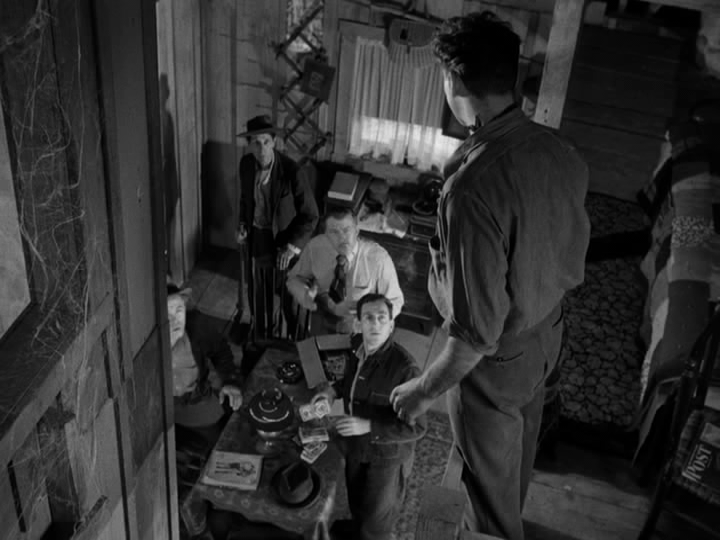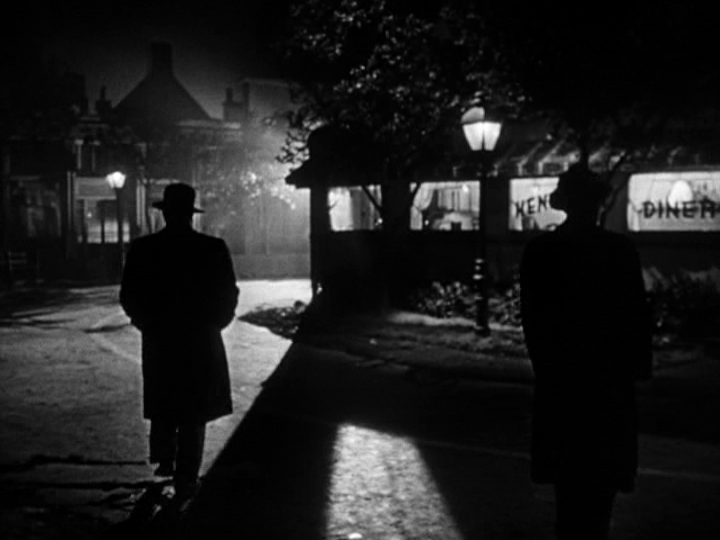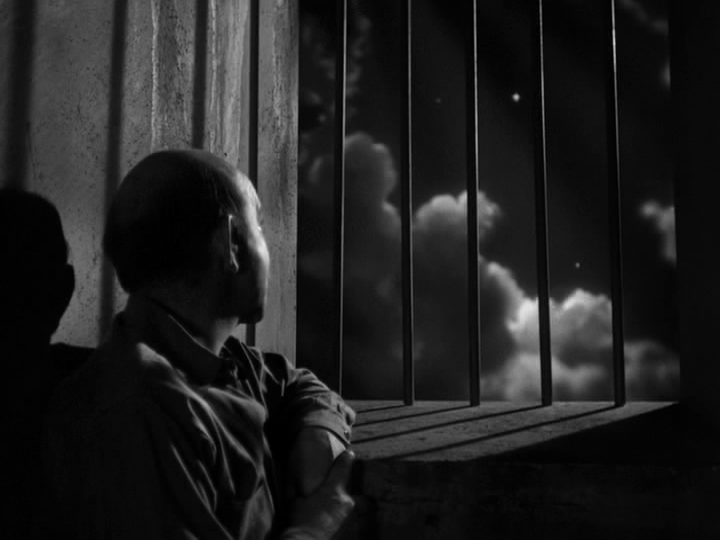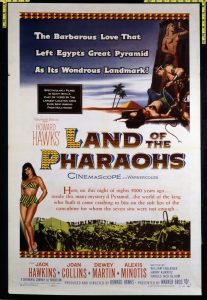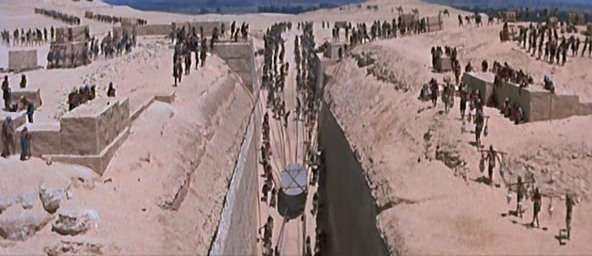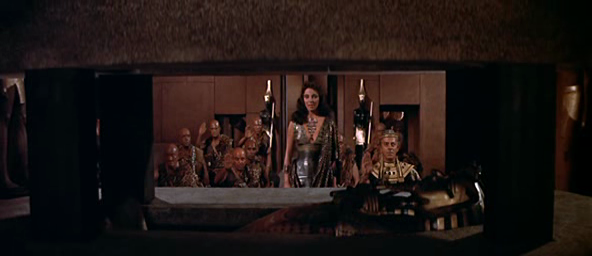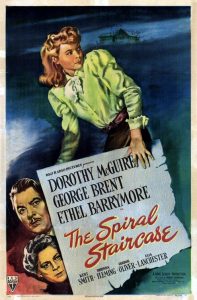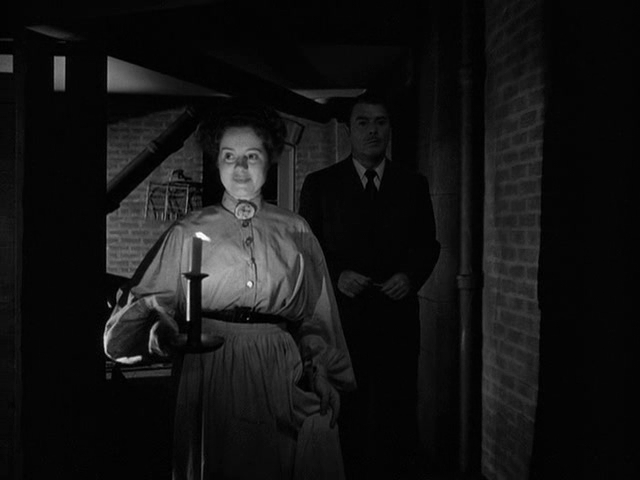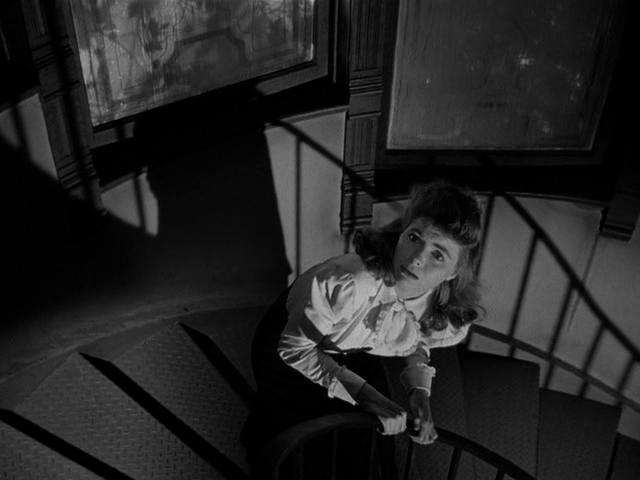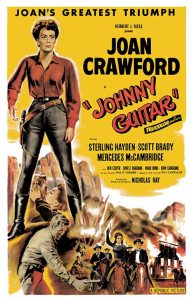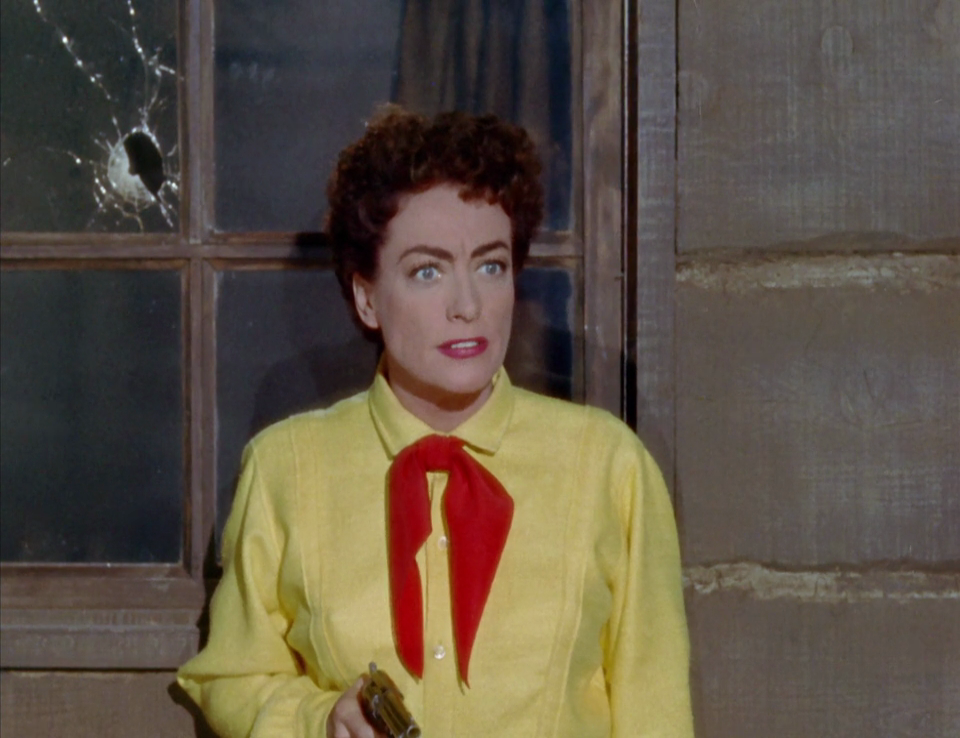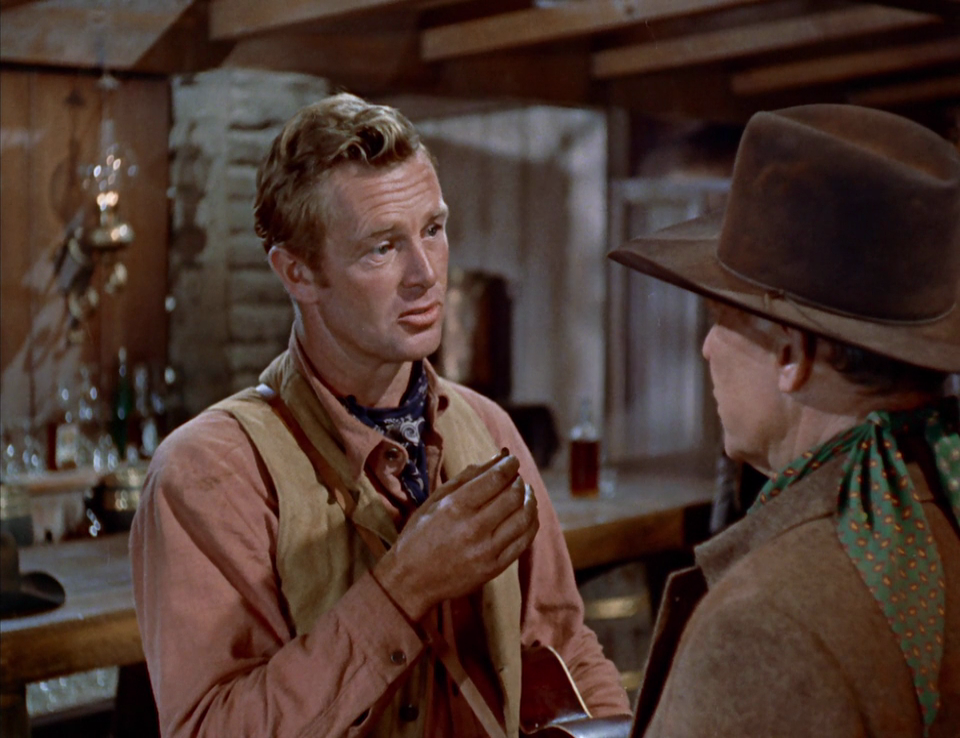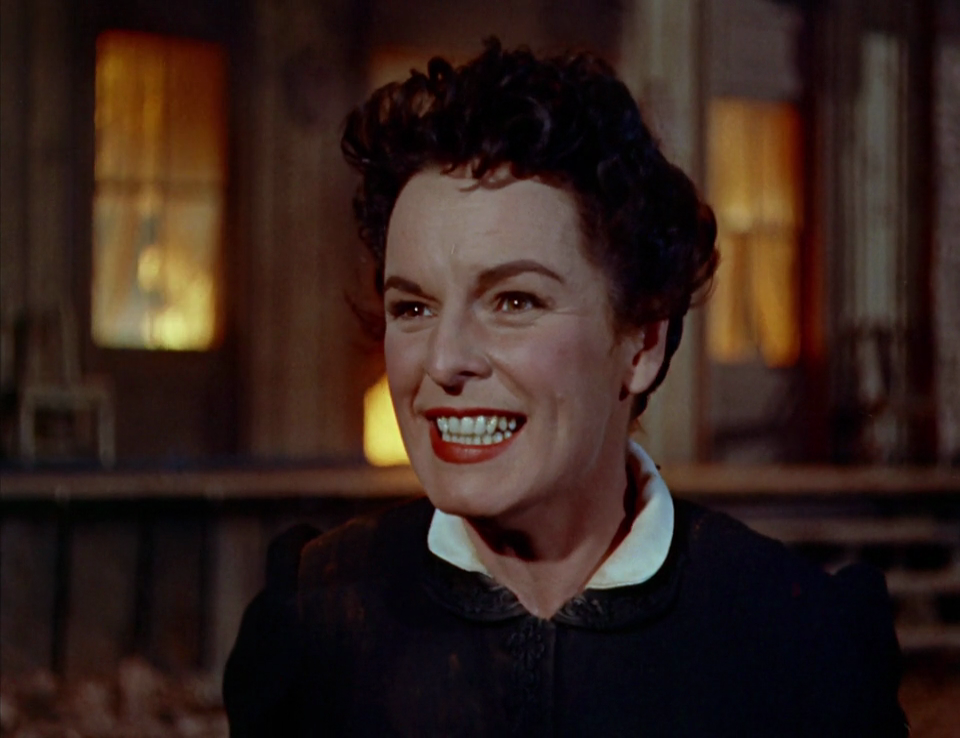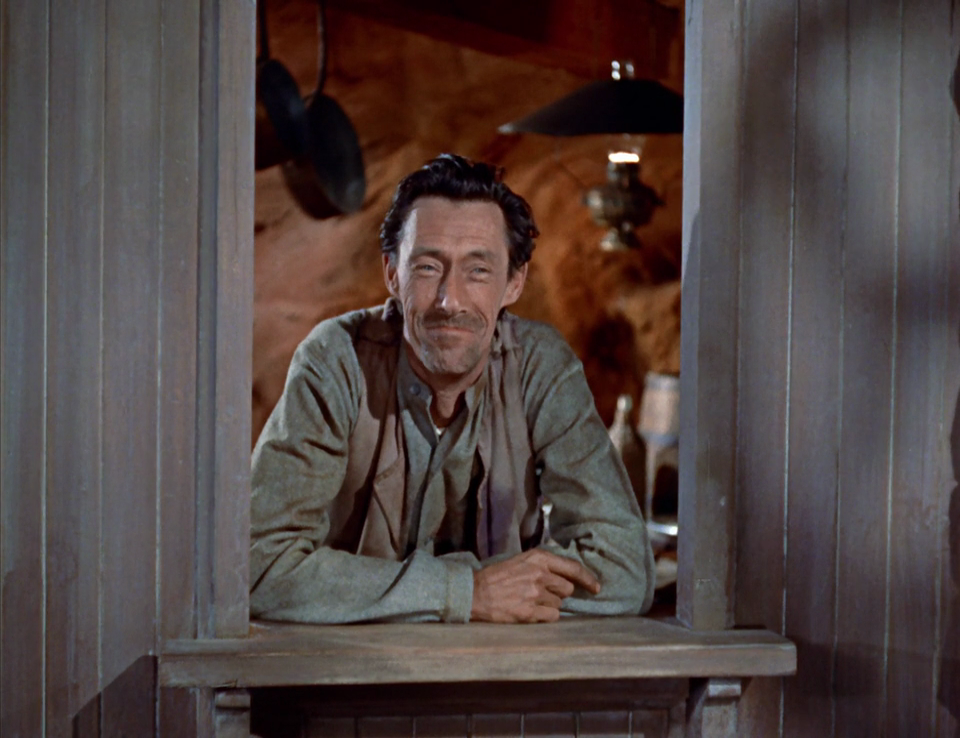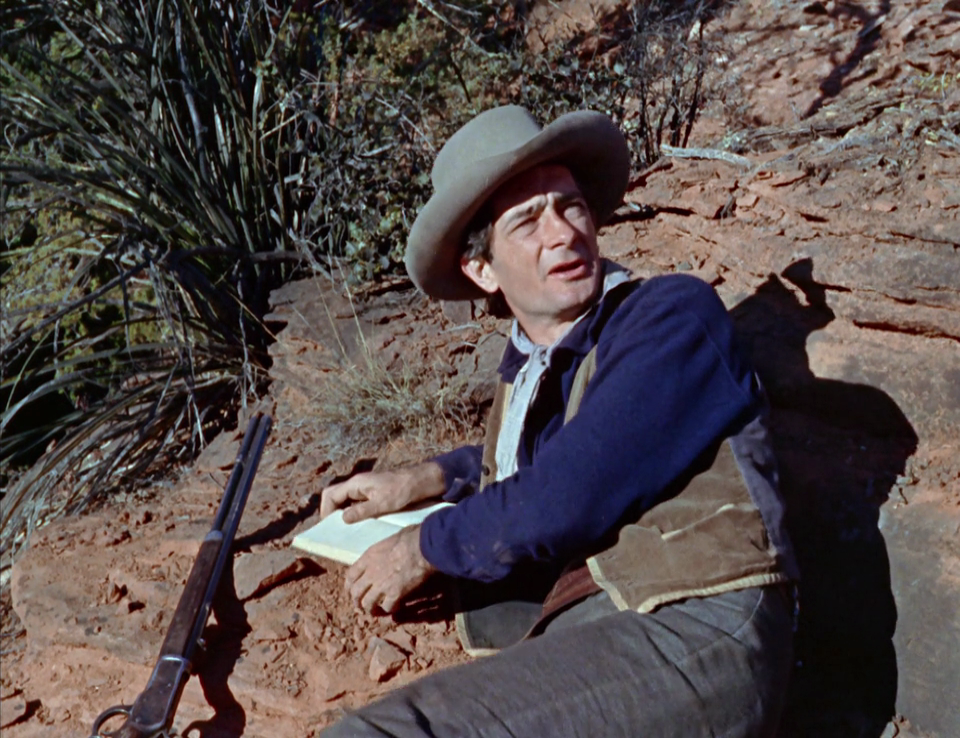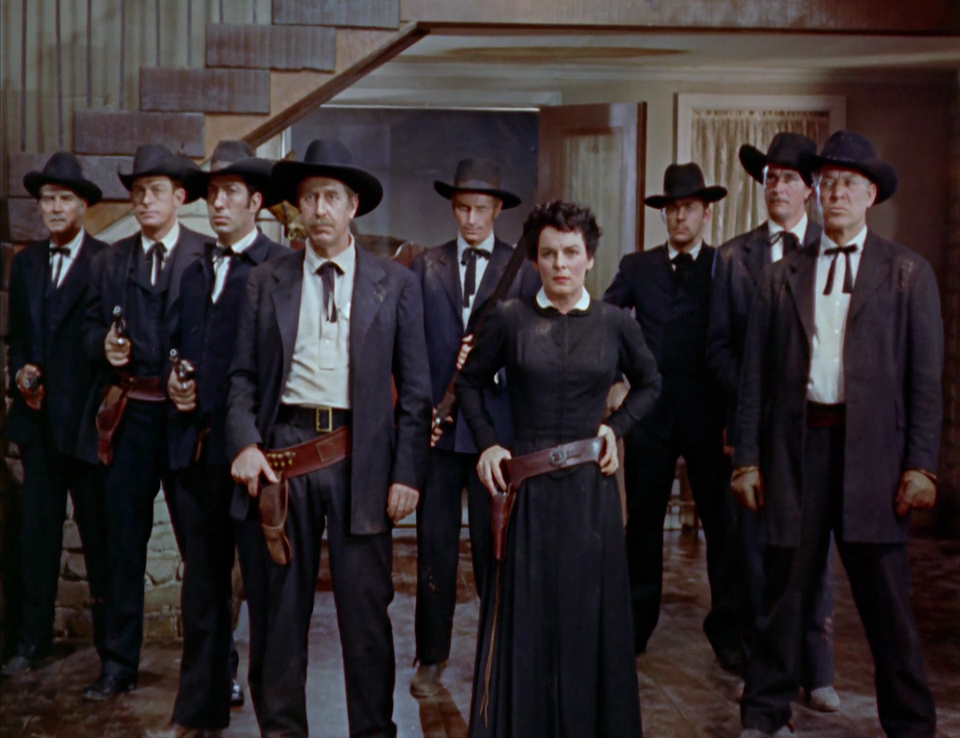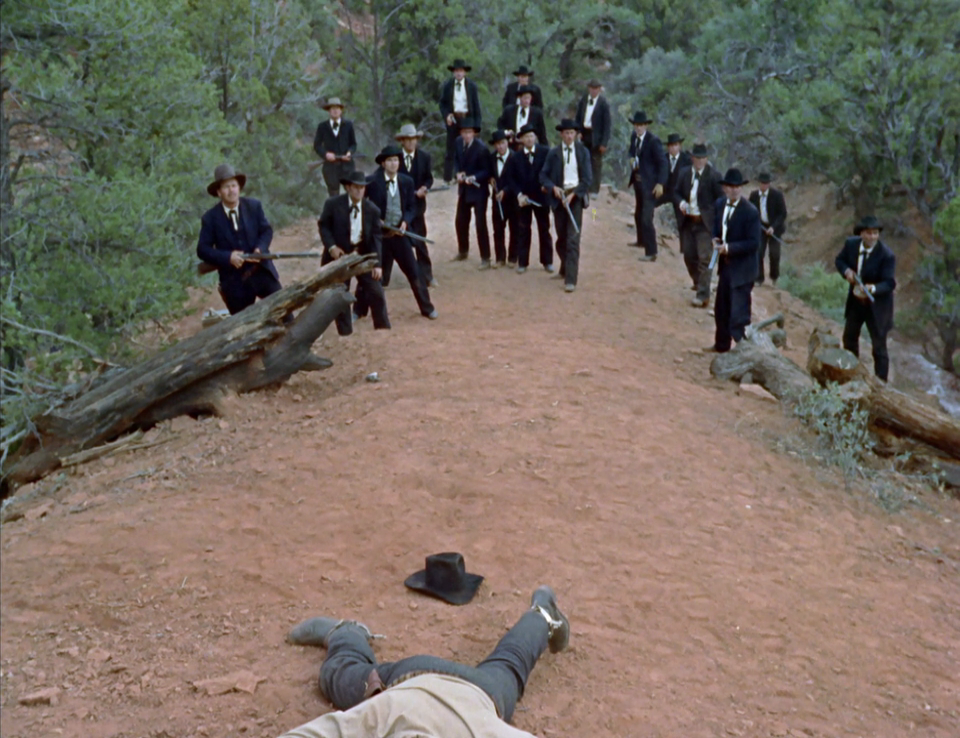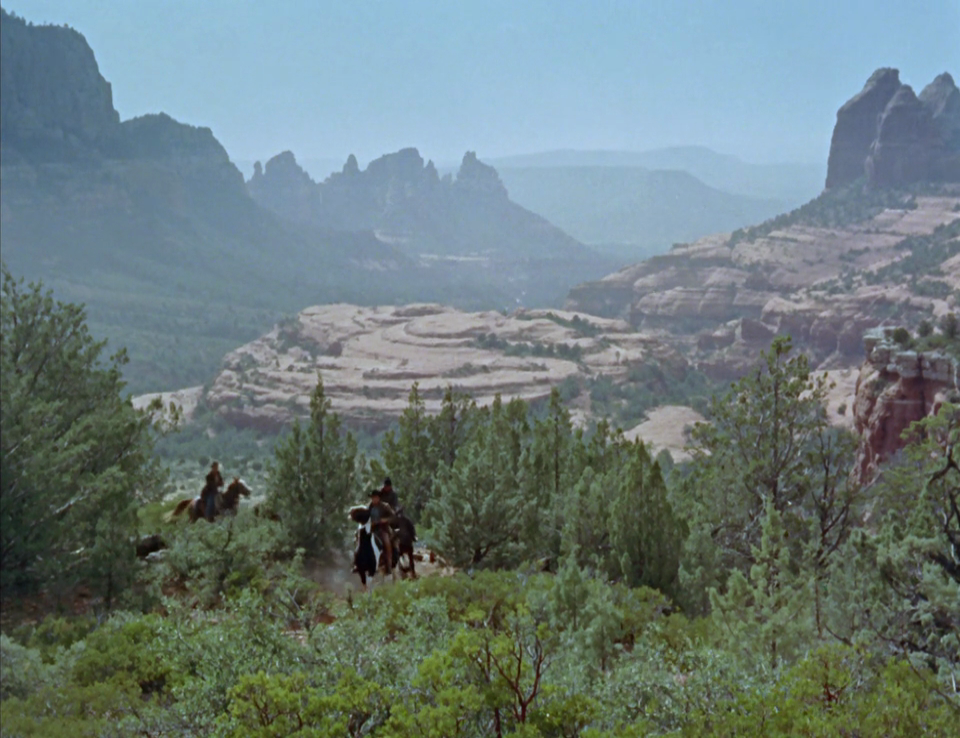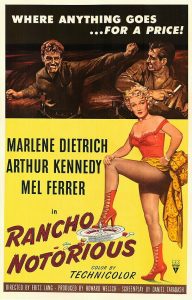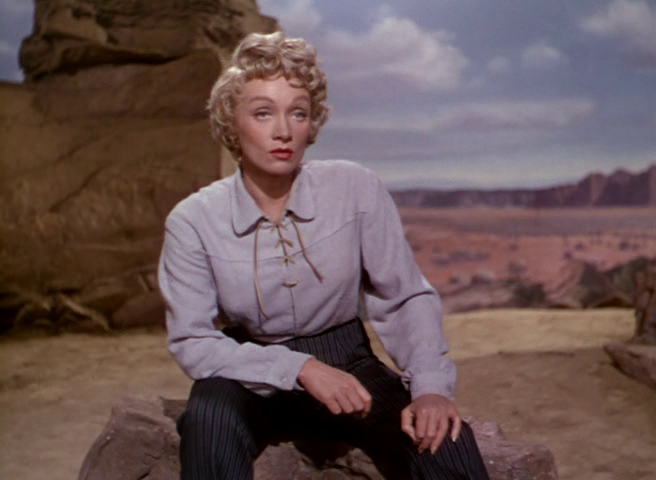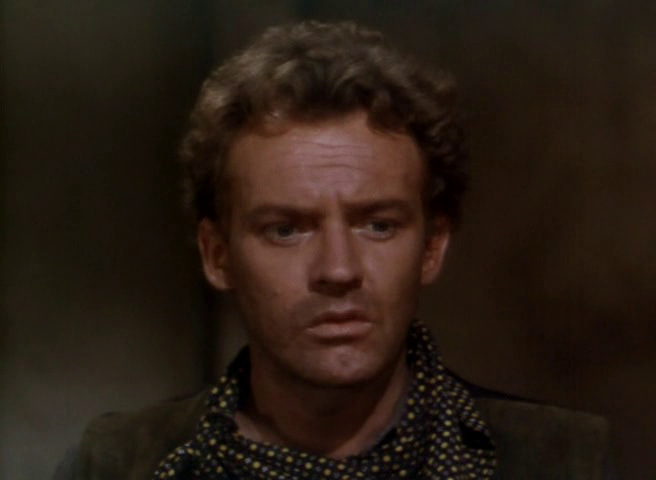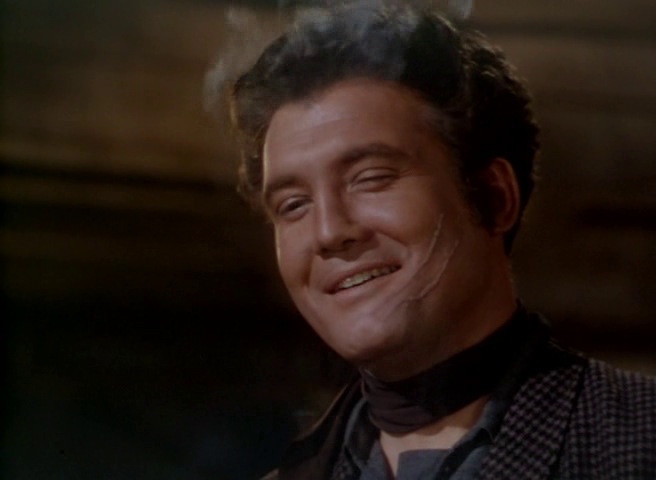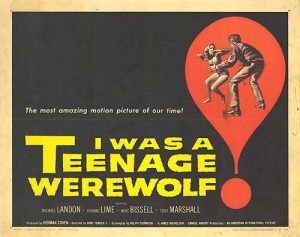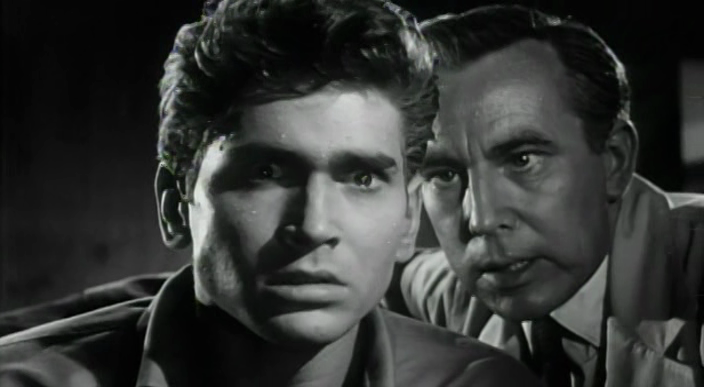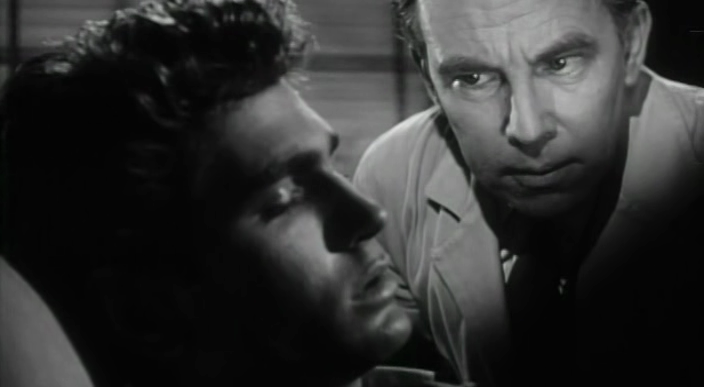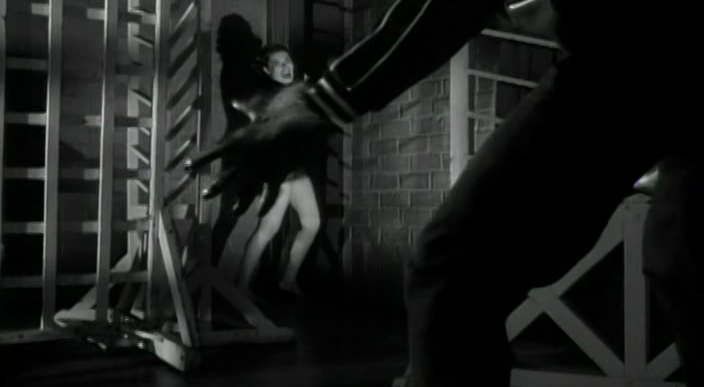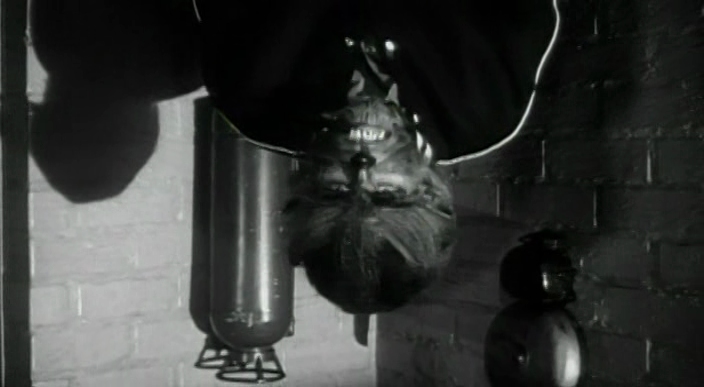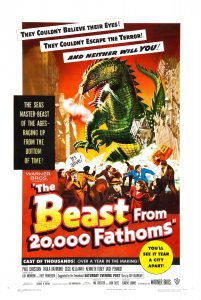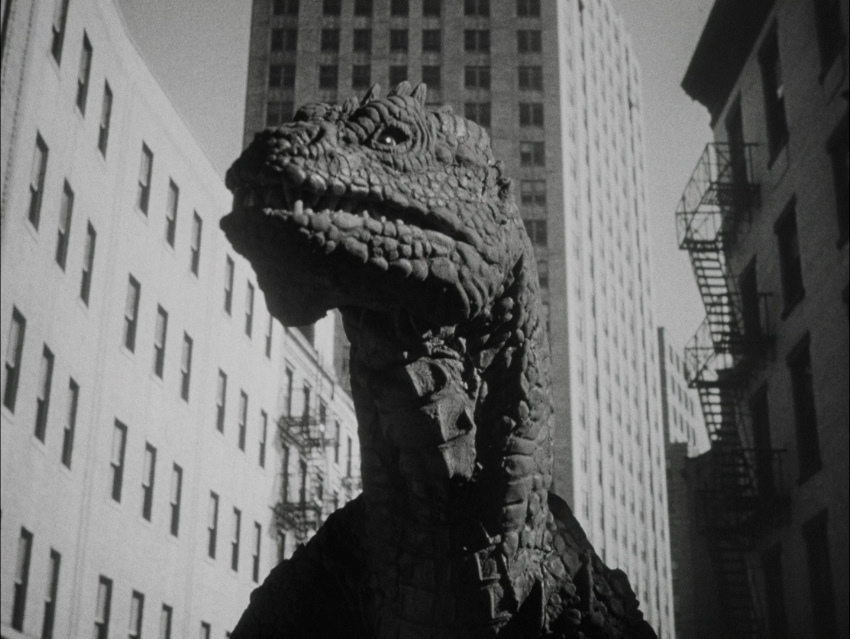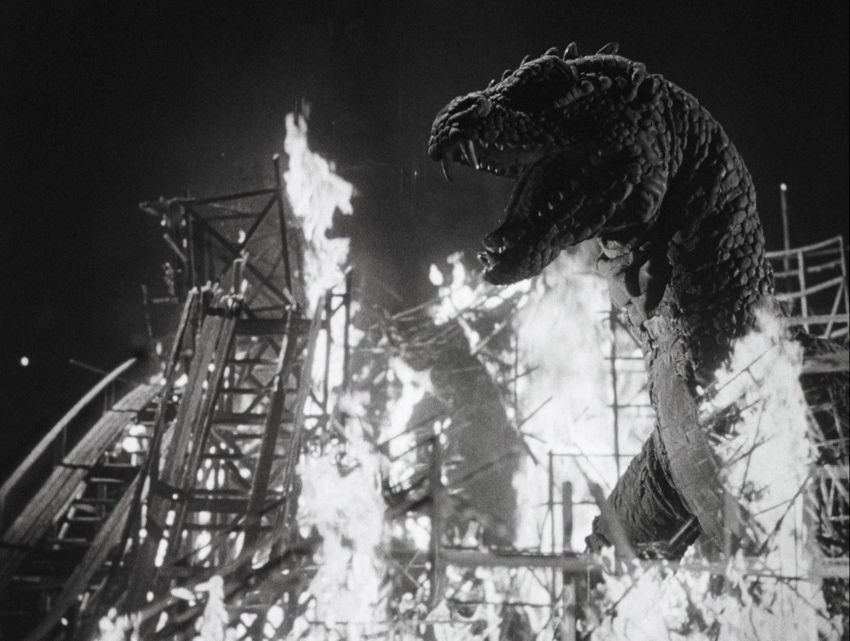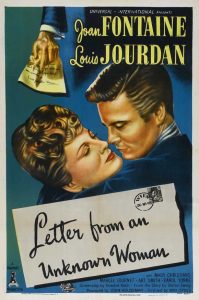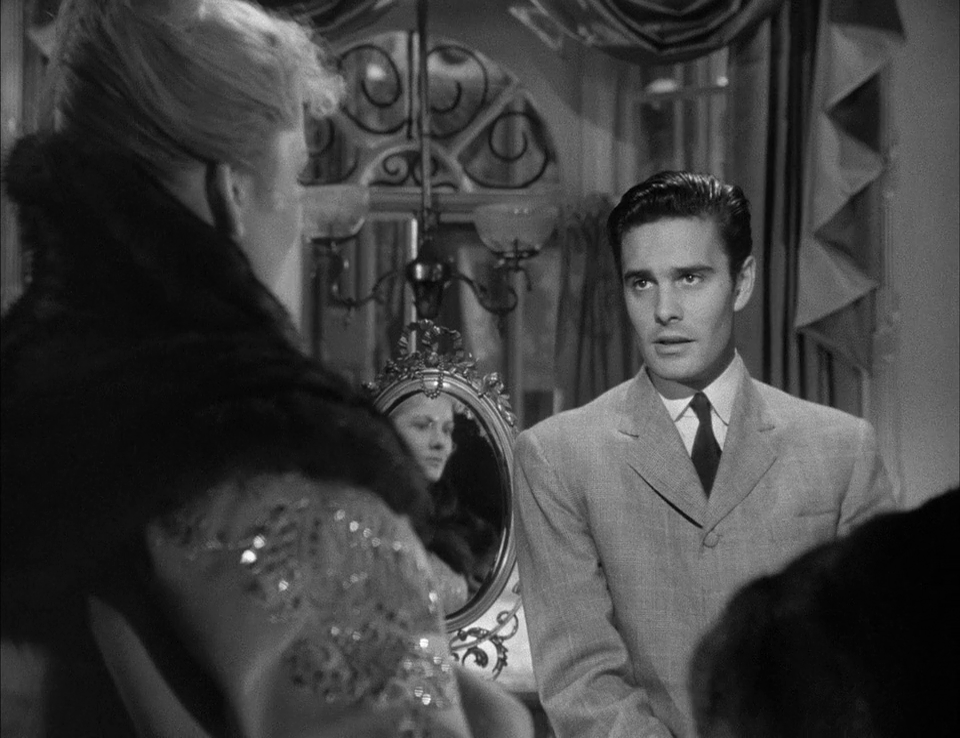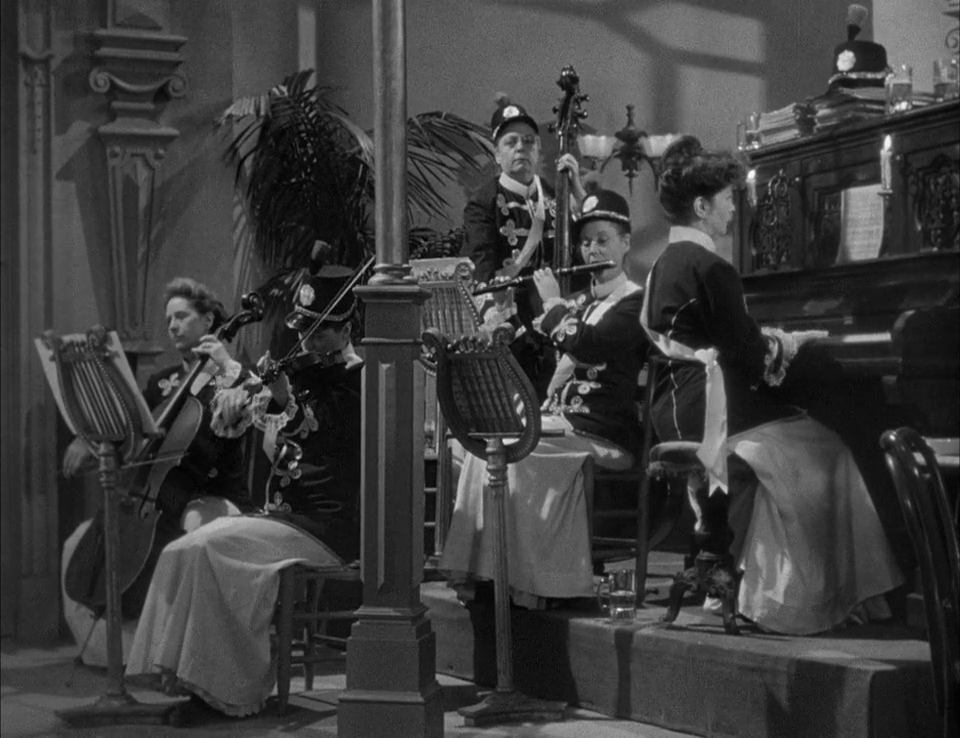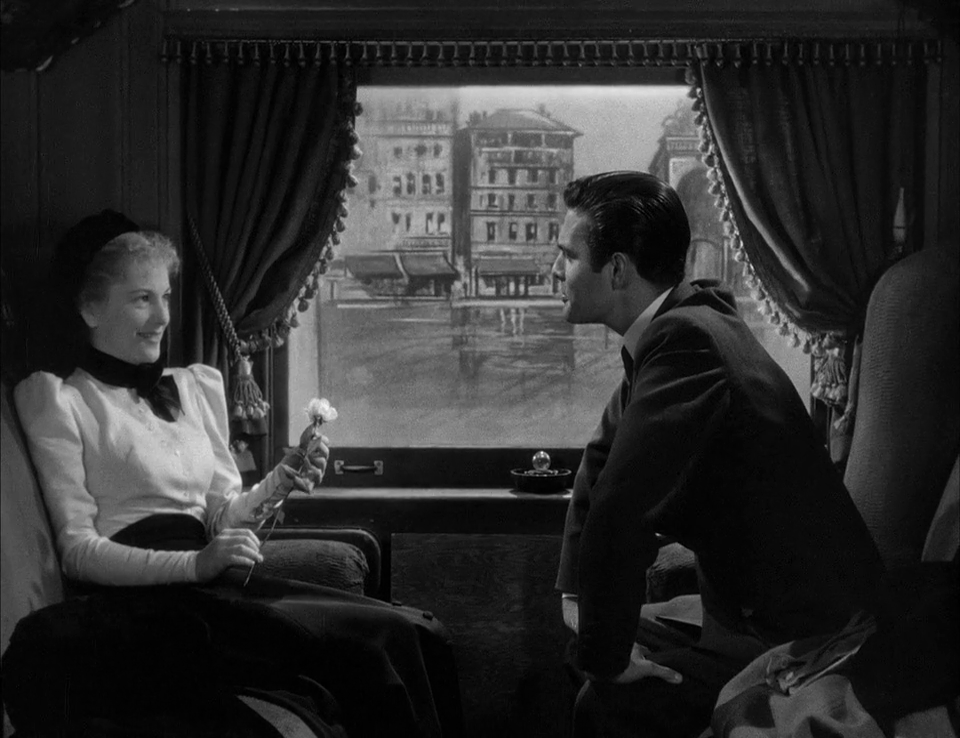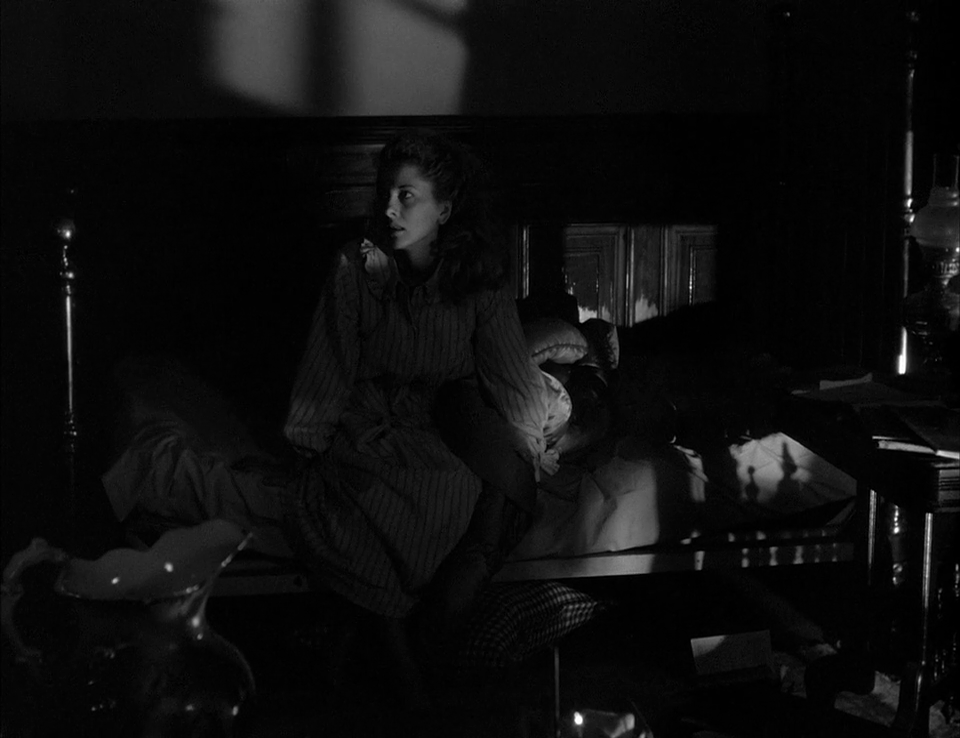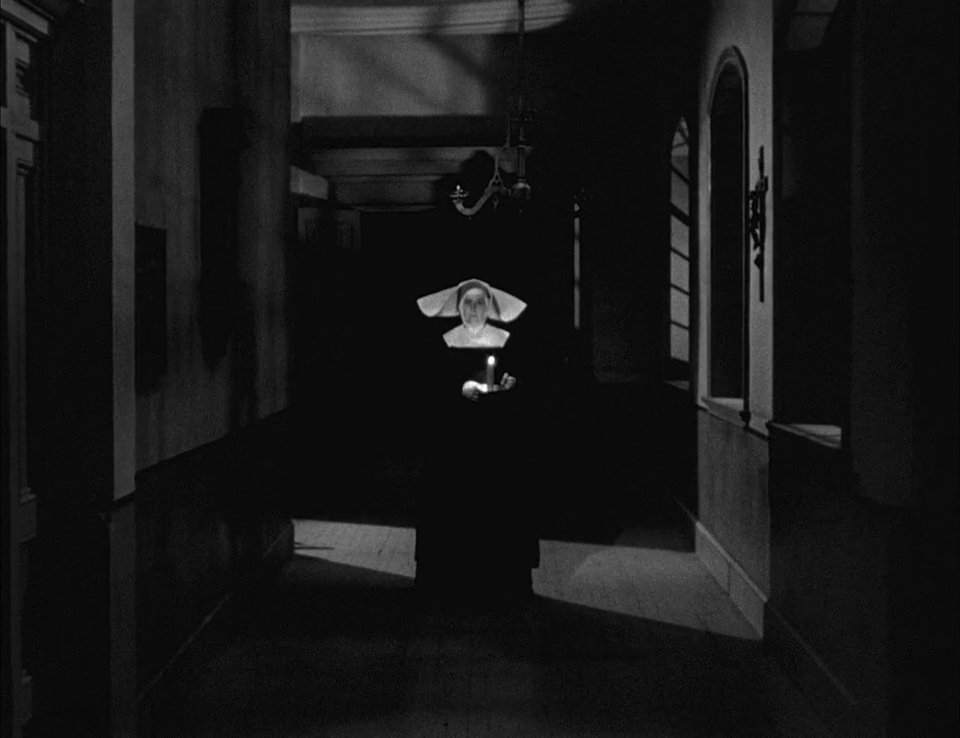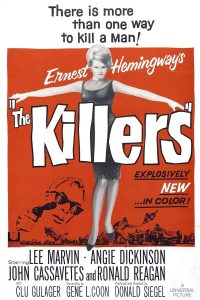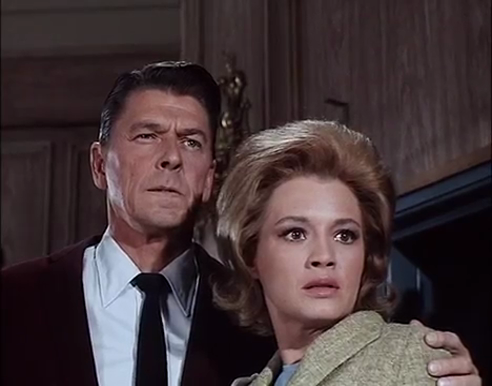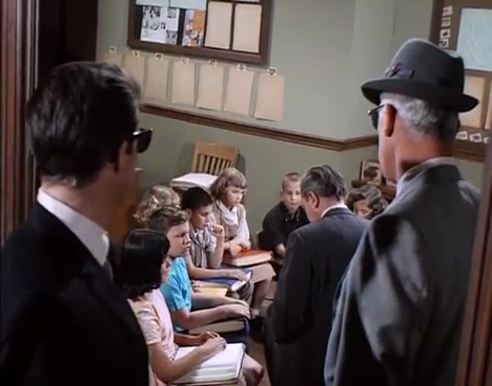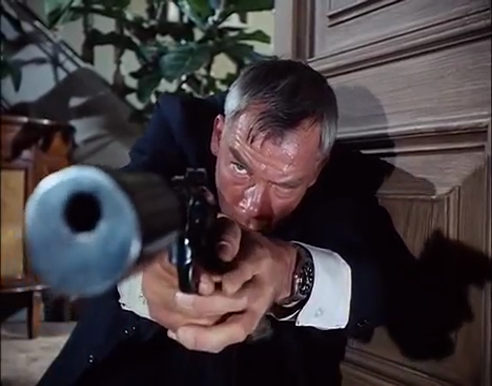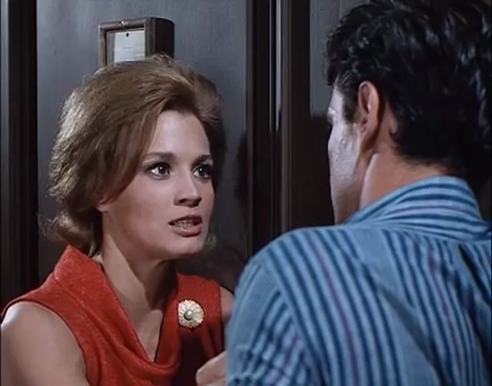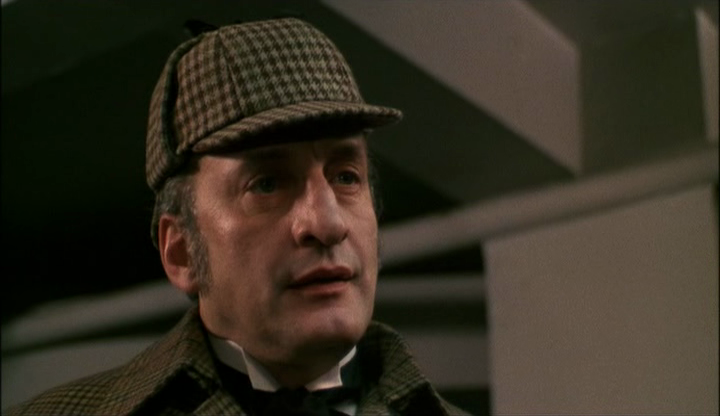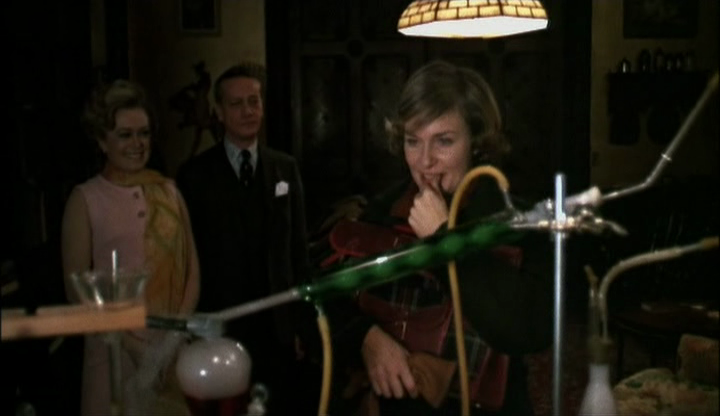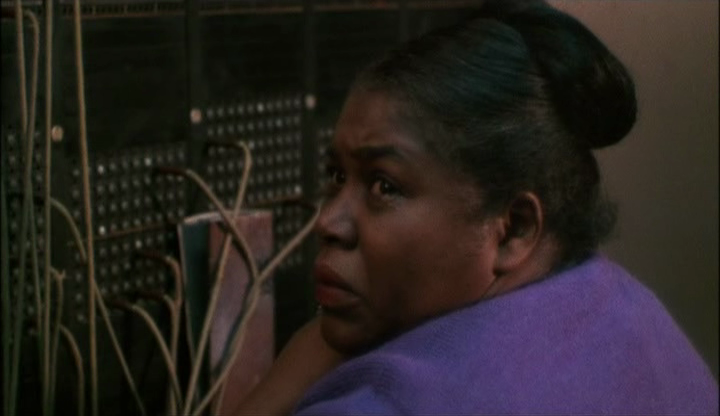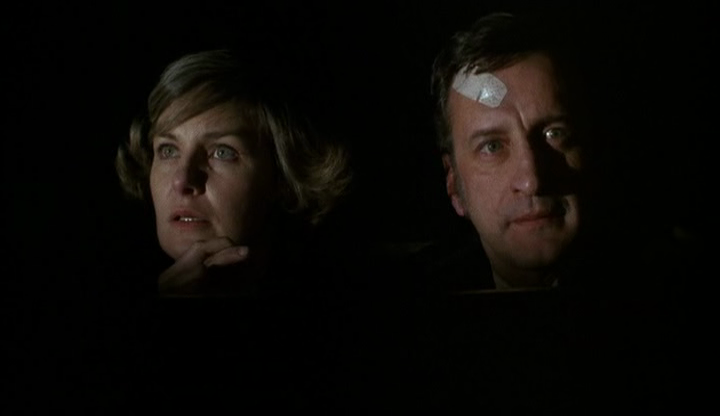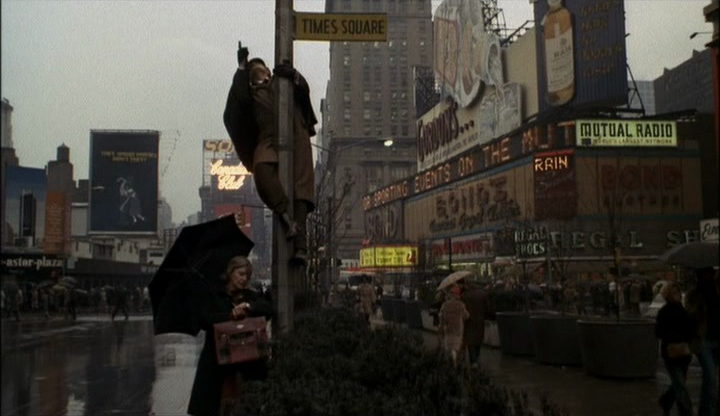|
Genres, Themes, Actors, and Directors:
- Ernest Borgnine Films
- Joan Crawford Films
- John Carradine Films
- Mercedes McCambridge Films
- Nicholas Ray Films
- Outlaws
- Rivalry
- Sterling Hayden Films
- Strong Females
- Ward Bond Films
- Westerns
Response to Peary’s Review:
As Peary writes, “Nicholas Ray’s legendary baroque western” is an “amusing parody of the ‘classic’ western; high camp; an homage to Fritz Lang’s Rancho Notorious; [and] a fifties youth-gang picture with adults playing teen parts”. Primarily, however, “it is a serious indictment of McCarthyite mob hysteria and bigotry”, one that attacks “the reactionary American political climate of 1954 by subverting what had always been a politically conservative genre”. He points out that “every character represents a political faction: left-handed Kid is the community; Vienna [Crawford] is a [‘foreigner’] who is pushed to side with the ‘communists’; … [and] Emma [McCambridge] is presented as a witch (dressed in black), the head of the witch-hunt, who uses fear and power to destroy the careers of rivals”. The remainder of Peary’s fascinating analysis — excerpted from his lengthier essay in Cult Movies — goes into even more detail about all the ways in which Johnny Guitar metaphorically represents HUAC-era America.
In his review, Peary also discusses the many “dialectically opposed forces in confrontation” in the film: “the future (civilization) vs. the past; progressives vs. conservatives (those who oppose the railroad); … the law vs. mob rule; … the emotionally and sexually self-assured (Vienna) vs. the unbalanced, sexually repressed (Emma); … and decency and goodness (what America stands for) vs. evil (Emma and those like her who represent the true threat to American ideals)”. Additionally, he comments on the rife “sexual symbolism” throughout the film (“guns, safes, staircases”) as well as the clever building of tension through constant repression of “violence, [both] symbolic and real” as “characters make threats but confrontations are postponed”.
Overall, Peary asserts that the film is “great fun” — perhaps most especially through Crawford’s memorable lead performance, in which her every movement, every statement, every expression, and every outfit is DELIBERATE. Speaking of Crawford, reading about her experiences while making Johnny Guitar offers invaluable insights to fans; the following lengthy excerpt from TCM’s article is worth citing in full:
Like their on-screen characters, Joan Crawford and Mercedes McCambridge were fierce rivals on the set as well. Crawford, whose professional jealousy of younger actresses was well known, initiated the feud after she angrily observed the director, cast, and crew applauding Mercedes’ scene where she addresses the posse. Ray later admitted, “I should have known some hell was going to break loose.” Later that night, an inebriated Joan Crawford was seen by the director stumbling along the highway. In her wake was a long trail of objects that he recognized as costumes and clothing belonging to McCambridge; Crawford had obviously raided the younger actress’ dressing room in a drunken rage. The very next day Crawford demanded major changes to the screenplay – favoring her – and had them approved since she was the star of the film. The major revision was an issue over gender. Instead of Johnny Guitar and the Dancin’ Kid as the central focus, Vienna and Emma would take center stage in the more traditionally masculine roles.
It’s no wonder that the article quotes director Ray as saying, “Quite a few times, I would have to stop the car and vomit before I got to work in the morning” (!!!). Thankfully, Ray persisted with his “brilliant filmmaking”, culminating with the highly memorable “gunfight between Vienna and Emma”, but with much to enjoy throughout.
Redeeming Qualities and Moments:
Must See?
Yes, as a cult favorite. Nominated as one of the Best Movies of the Year in Peary’s Alternate Oscars.
Categories
(Listed in 1001 Movies You Must See Before You Die)
Links:
|
